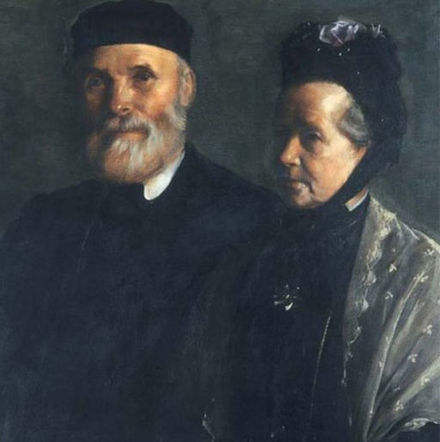Irish Legal Heritage: Irish Women Patrols

Pictured: Anna Haslam, who was instrumental in setting up the Irish Women Patrol, along with her husband Thomas.
The Garda Síochána Act 1958 provided for the admission of women to membership of An Garda Síochána, and this month marks the 60th anniversary of women joining An Garda Síochána. However, the 12 Ban Ghardaí appointed on 10 July 1959 were not the first female police officers in Ireland.
The appointment of female police officers was something which suffragettes agitated for, particularly for the protection of women and children, and they eventually set up their own volunteer forces throughout Britain and Ireland.
In Ireland, the Irish Women Patrol launched in 1914, having trained under the National Union of Women Workers. (Senia Pašeta, “Waging War on the Streets”: the Irish Women Patrol, 1914–22 (2014)). The women who volunteered to patrol went out in pairs at night, were ununiformed, but wore a badge and carried “a card which authorised police to assist them if necessary” (Pašeta, 2014).
The women who were able to volunteer were generally well off, middle-class women, vying to “protect the children in our streets from the danger of moral contamination”.
Writing in the Irish Citizen in October 1915, one woman patrol described her experience patrolling the streets of Dublin at night, how young girls “out night after night, no other vocation in life open to them when once they have taken to the streets; they have not the same chance as men have of living an immoral life and being received by respectable people, and having excuses made for them if they are found out”.
The writer of the column went on to say, “experience teaches us that girls take to the streets for many causes, and surely one of the chief reasons is the miserable tenement house, where whole families live in one room, and there can be little attempt at any decency, let alone comfort or cleanliness… so they frequent the streets where mischief is just waiting for them”.
By 1917, the need for professionalisation of women patrols was formally recognised when paid positions were offered by the Commissioner of Police. By 1918, the Dublin Metropolitan Police had employed four paid policewomen, and two paid policewomen were appointed in Belfast – the majority of whom had previously been Irish Women Patrol volunteers (Pašeta, 2014).
Seosamh Gráinséir











